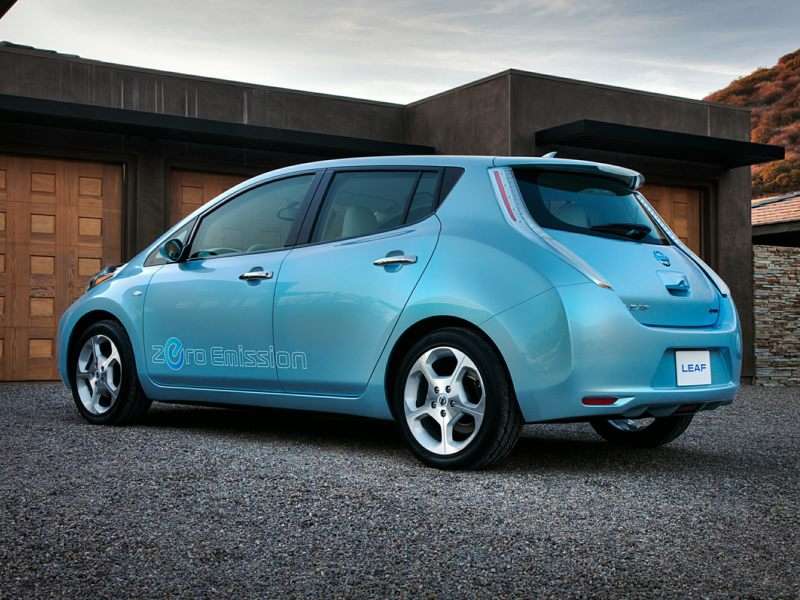Recent Articles
Popular Makes
Body Types
2016 Cars Made with Sustainable Materials

While much is made of incorporating sustainable materials in the construction of contemporary cars, the idea goes back to earlier days of the automobile. Henry Ford, as one example, began collaborating with agricultural chemist George Washington Carver on ideas of this nature back in 1934. Among other innovations, their work together resulted in a 1942 lightweight show car from Ford with a plastic body made from soybeans. Today, Ford remains a leader in this area, using plant-based materials rather than petrochemicals for a variety of parts in its cars, and a number of other manufacturers have followed suit—as you’ll see on this list of cars made with sustainable materials.
Audi A3
When Audi boasts about the technological quotient of its A3 compact luxury model, you’ll typically hear first about the latest multimedia interface, Audi Connect 4G LTE WiFi, and active lane assist for autonomous driver assistance. However, there’s another side to the A3’s technological innovation. Enthuiastic proponents of sustainability, Audi built its A3, a luxurious and fun car, using a variety of sustainable materials, including cotton fiber in the floor insulation, recycled paper in the cargo area floor, and cellulose in the headliner.

BMW i3
As it becomes a more familiar sight on the streets of urban population centers, the BMW i3 is poised to become the next cult car. BMW’s first “mainstream” model built around sustainability as the central concept, the 2016 BMW i3 is loaded with innovation. Among the sustainable materials used in its construction are plant-fiber-reinforced elements in the doors, recycled plastic fabric for the seat covers, and renewable eucalyptus wood in the dash. While the distinctively styled BMW electric car incorporates a gasoline-fired generator to keep the battery pack operating as it nears depletion, it’s also constructed of aluminum and carbon-fiber-reinforced polymer for exceptional weight reductions.

Photo by Benjamin Hunting
Ford Escape
In addition to employing remarkably sophisticated turbocharged engines that yield outstanding power from small displacement, Ford is a leader in cars made with sustainable materials. Building solidly upon the legacy Henry Ford established with the brilliant Dr. George Washington Carver’s assistance, the 2016 Ford Escape is rife with sustainability. Within the confines of the compact crossover SUV, are soy-based foam in its headliner, castor oil-derived foam in its instrument panel, bioplastics in the model’s door panels, and nylon resin from recycled carpets in the Escape’s cylinder-head covers.

Ford F-150
The biggest news about the new Ford F-150 pickup truck has been the aluminum body structure. Ford made this move to save weight, which improves fuel economy and thus reduces greenhouse gas emissions. Applying the company’s innovative EcoBoost engine strategies further reduces the F-150’s overall environmental impact. Along with these efforts, Ford’s materials engineering team specified rice-hull-reinforced composite plastic for the engine wiring harness, seat fabric made from recycled water bottles, and recycled carpet resin in America’s best-selling pickup’s cylinder-head covers.

Ford Flex
In addition to its remarkable versatility as a family-oriented vehicle, the 2016 Ford Flex has a number of “flexible” strategies in place to minimize its environmental footprint. Among cars made with sustainable materials, Flex marked the automotive industry’s first application of wheat straw-reinforced plastic, in this case for its third-row storage bins. This replaced the energy-inefficient glass fibers Ford previously used to reinforce plastic parts. Other aspects of the Ford Flex to employ sustainable materials include engine seals and gaskets made with soy oils and recycled tires.

Ford Fusion
The sleekly styled Ford Fusion attracted plenty of attention at launch with its “Aston Martin” grille treatment. Interestingly, while everyone’s attention was focused on the outside of the Fusion, on the inside Ford’s materials engineers had quietly made the Fusion one of the most sustainable cars on the road. According to Ford, Fusion was the first global vehicle program to use seat fabric made from recycled material, with the potential to recycle enough plastic bottles and post-industrial waste to make 1.5 million yards of fabric annually. In addition to the recycled “water bottle" seat fabric, Fusion uses soy and recycled tires in its seals and gaskets, as well as recycled carpet resin in its cylinder-head covers.

Ford Mustang
When it comes to the Ford Mustang, the old adage, “Everything old is new again,” certainly fits, given that the model’s legacy goes all the way back to 1964, and the look of the current car evokes its heritage much more clearly than did many of the previous iterations of the vaunted Pony car. In order to make our list of cars made with sustainable materials, the Mustang also uses seat fabric made from recycled water bottles as well as recycled carpet resin in its cylinder-head covers.

Photo by Ford Media
Lincoln MKX
Lincoln is further ahead in reducing its environmental impact than many marques considered more “edgy” and “cool.” First of all, gas-guzzling Lincoln V8 engines are a thing of the past. In fact, there is no V8 in the Lincoln lineup at all. Instead the marque goes with an extremely powerful turbocharged V6 to deliver the power output of a V8 with the fuel consumption of a V6. Further, its models contain innovations like reinforced plastic that uses cellulose from sustainably grown trees to replace fiberglass in the center console.

Mercedes-Benz C-Class
Known for its cutting-edge technology, Mercedes-Benz has used water-borne paint and coded plastic parts for recycling in its cars for decades. The all-new C-Class, recently introduced for the 2015 model year, takes this to an even loftier plane. Examine the model closely, and you’ll find recycled plastics employed in some 52 components, including its wheelwell liners and bumpers as well as its air and water baffles. Rather than relying upon petrochemicals, Mercedes-Benz incorporates materials from renewable natural fibers for use in an additional 76 components of the car, including its interior trim pieces.

Nissan Leaf
You’d expect the world’s first mass-produced mainstream electric car to have sustainability incorporated into its basic makeup, and the Nissan Leaf thoroughly lives up to this expectation. A good 25 percent of the car is made from recycled materials. In fact, some 375 pounds is made up of recycled materials, including recycled soft drink and water bottles for seat cover fabric as well as recycled jeans and other cast-off cloth for sound deadening. Plus, most of the Leaf’s plastic components are comprised of materials derived from recycled automotive and household plastics.
